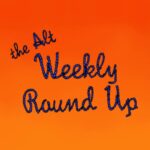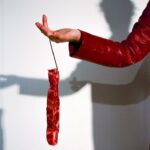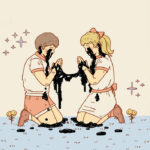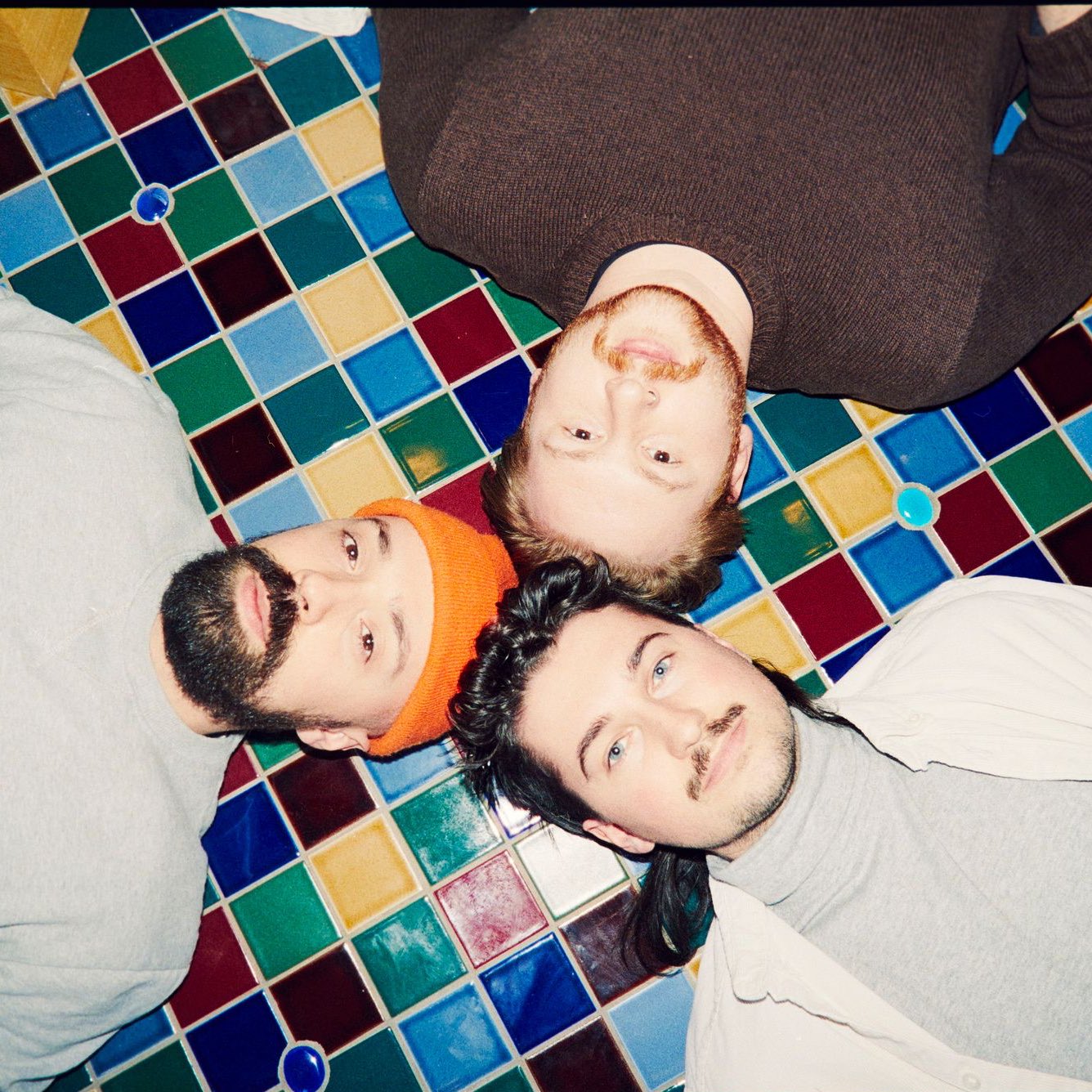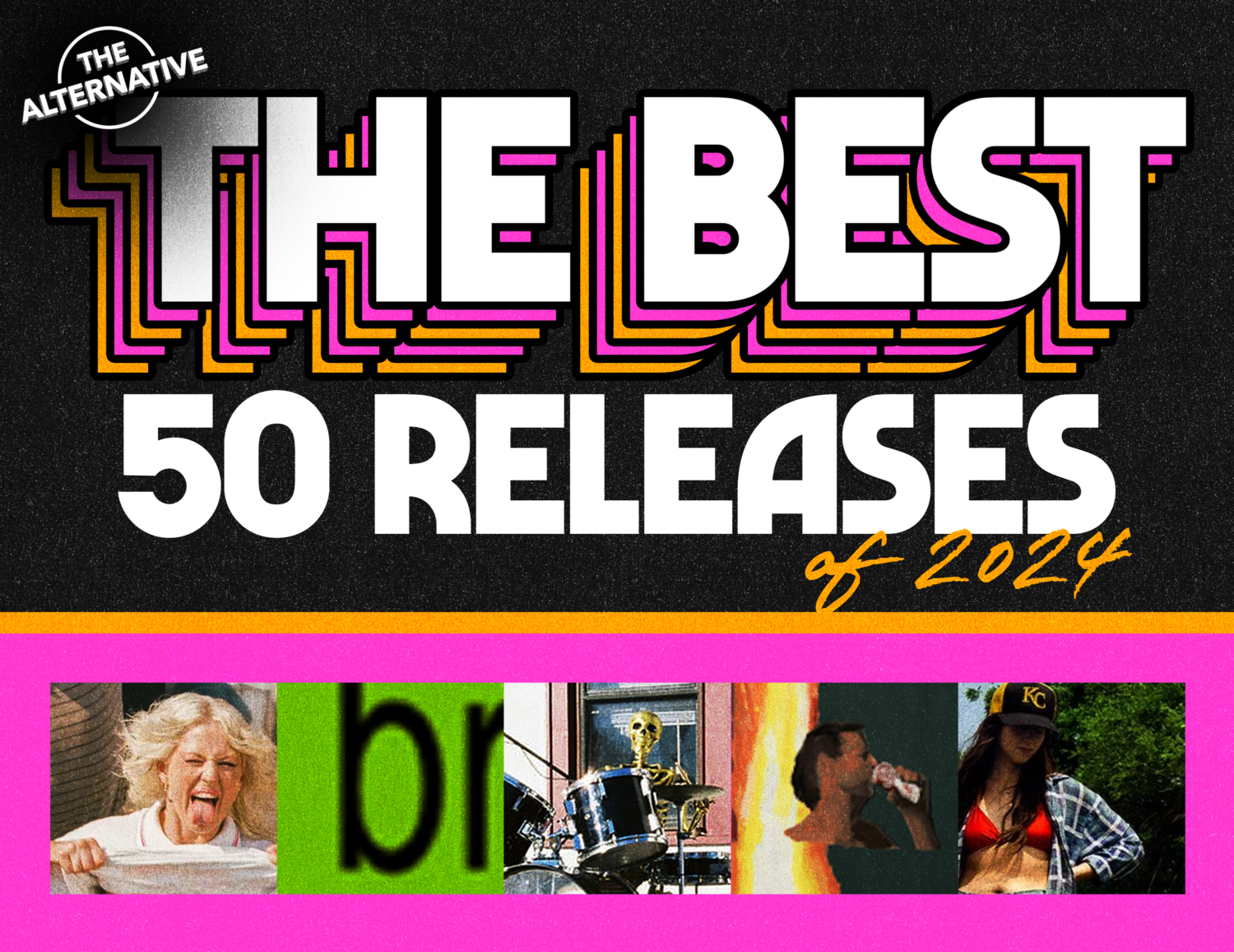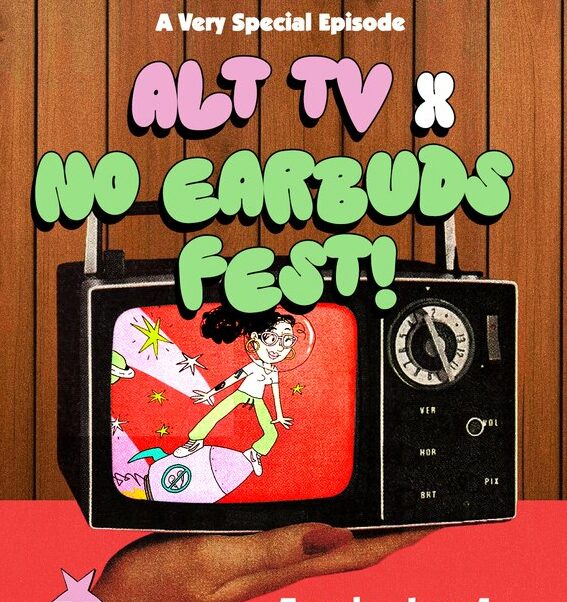Artist Interview: Kevin Klein of Valleyheart
Posted: by The Alt Editing Staff
The best moments on Valleyheart’s debut record Everyone I’ve Ever Loved were the times when the band pulled back to let the songs breathe. If there was one particular talent shown on that album, it’s that the Salem, MA, alt rockers clearly knew when marinating in tension would be just as effective as letting it all out. The thudding verses of “Agnosia” burn with with an undercurrent of desperation, the hazy “Dissolve” always suggests a climactic release that never comes, and the ambient instrumental bridge of “Drowned in Living Waters” hits just as hard as the thundering chorus that follows. On Heal My Head, Valleyheart have made a whole album out of the moment before the collapse. The vivid burst of lead single “The Numbers” is a bit of a misdirection, as most of the record instead follows the path of the second prerelease single, the placid “Your Favorite Jacket.” It’s a patient record, and as such it’s one that rewards patience. But there are those tracks that provide immediate gratification: “Miracle” takes the overcast indie pop of Death Cab and filters it through dream pop haze, and the bright sway of “Warning Signs” is inviting and infectious. The Alternative sat down with frontman Kevin Klein to discuss the writing and structuring of the record, how it differs from previous Valleyheart releases, and the decision to let each song take on its own life.
You guys are on Tooth and Nail now. What’s that like and how’d that happen?
It’s great, been really great. It’s cool to be a part of the label that put out so many records I listened to when I was younger–that we all listened to when we were younger. It’s been great so far–they’re nothing but supportive and excited for us. It’s been a lot of fun to see a new wave of artists coming out of that label, too. It’s been exciting.
It’s funny how you guys always seem to end up on metal or hardcore labels–first Rise, now this.
Yeah, it’s cool. [laughs] I grew up playing Christian metal, and I cringed thinking about that for so long, but now, fuck it–it’s part of my story, and I’m gonna lean into it! I’m gonna be proud of that. [laughs] Not that Tooth and Nail’s a Christian metalcore label now, because they’re not, but, you know.
It’s funny, too, that this is much mellower than your previous stuff.
For sure.
When we talked about Scenery, you’d mentioned that the short form of the EP allowed you some more space to experiment a little more. How did that experimentation inform Heal My Head, if at all?
I remember talking about that, about the forks in the road, being able to choose which route we’d take, and I think that with this one, we felt like we pushed the envelope in different ways so we didn’t have to think in terms of genre. We just wrote what felt natural for each song. Somehow it all came out cohesive. The goal was definitely to still experiment, to let each song be its own world, but still work together. Scenery was a sort of transition piece to have that lead to this album so it’s not such a stark difference.
The title track–which might be my favorite Valleyheart song of all now–is super out there. How did that one come to be? And why did you decide to title the record after that song?
Usually Valleyheart songs come out in a couple different ways, and sometimes it’s organic when we all meet together and let a song build from a melody, and sometimes it’s demo-based projects I map out on my own and then bring to the guys to refine. In that process there’s various levels of where things are done, and sometimes demos are really rough and it’s just me singing into my iPod headphones, and sometimes I really try to flesh things out. I find that when you’re demoing, you might really latch onto an idea or a vibe that’s hard to recreate later, so I try to record everything knowing that anything could make the final master. “Heal My Head” was one of those songs–a lot of the elements that made it into the final were recorded in my bedroom while I was writing the song, a lot of the droney stuff, and what influenced the drum sound–those are all real drums. We’re excited about that. They sound real mechanical. The original demo had this choppy drum machine sound, but we wanted it to feel organic, so we dampened a bunch, put blankets and Zakk’s softcover case on his toms–we did a bunch to rev it up and make it sound dry. There’s no drum samples on that song at all–or the record, but that one sounds like it. The vision for that song was done early on. It was one that I had written out and made in real time. That big ending I brought to the guys to tighten up a bit. I brought it done, but it was cool to see how everyone put a flavor into it to make it feel like a song that wasn’t just made on my computer. Lyrically, I don’t know. It wasn’t intended to be the title track. After we finished all the songs–I’m very intentional about track listings–I wasn’t able to lock down an album title. I thought that song really just wrapped up the concepts of the record lyrically, concepts of time and clarity and mental health. It felt like a plea for help and clarity and connection, which is sorta what the record’s about.
The structure of the record itself is very different from Everyone I’ve Ever Loved. You’ve got an intro with “Birth” and a little outro in “6:26,” and I’m curious what those lend to the narrative of the record, in your mind.
A big theme of the record is spring, the idea of weather and the patterns we see in nature. That lends to a lot of the lyrics and to the artwork. I wanted the record to feel dynamic as a whole project, not just each song. That intro felt like a spring day, like something’s blooming–cheesy as it sounds–and something dying. I wanted the opener to feel like birth and the closer to feel like maybe what you hear as you die. It wasn’t always intended to be that way. “Birth” was actually the last song at first. “6:26” was a voice memo I made in the studio. I had someone do strings after. I was trying to write lyrics for “Vampire Smile,” so it’s the same chord progression, and I had my phone, and I just sorta felt stressed and then in the studio I had this epiphany that the record was kinda a microcosm of life. Us being in the studio and having an end date, trying to get everything we wanted in that time, the anxiety of recording, it felt like it mirrored the anxiety of life–like, “Will I have enough time to say what I need to say? To get what I want to get out of this? And if not, what does that mean?” In that moment I saw this connection with these ideas, and with all that in mind I decided to try “Birth” in the beginning and totally change the narrative of the record. It was cool, putting that last chapter first to see how the story changed. The last record we had it clear from the beginning, mostly.
That makes sense. This record seems to pick up a lot more from Scenery anyway than from Everyone I’ve Ever Loved too.
Our last record was a lot about my growing up in the Evangelical Church, and people seemed to connect with that, but this new record doesn’t touch upon that story as much–but it’s still me writing, so it connects still. Personally I don’t consider myself a Christian anymore, but there’s a truth that I still connect with, that we’re blessed and cursed with consciousness. We can transcend who we are, and I think that can be a great thing. But people will sometimes tell me, like, “Everyone I’ve Ever Loved helped me a lot through faith.” And they’ll ask what I was trying to do, if I was trying to dismantle these ideas, but honestly, I was just writing! There was no conscious effort to write a record about religion. It’s just that that was, at the time, what I was going through. It was just in my head. It caused this tear in my sense of self, my family, my friends. But I feel like this album is as much about faith as that one is. It’s still the continuation of that sense of identity and our place in the world. As opposed to Christianity, it’s more that we all have faith in something. This feels like a continuation of that story of finding our place in this wild world.
Something cool to me about Heal My Head is that it feels you manage to convey a lot of emotion even thought there’s a lot less emphasis on the big climactic moments. I think about, like, the end of “Back and Forth” when it gets louder, but the most prominent instrument isn’t the guitar, it’s that chiming piano line.
That makes sense. I appreciate bands that lean on vocal dynamics, but I also really appreciate instrumental music. I’ve felt more emotionally attached to Hammock songs than a lot of other stuff. We’re always asking how we can tell a story through a different lens–and it’s fun to try new stuff. I love when bands progress and you see the same voice and story through a different set of limitations. It paints the picture in a different way and it’s familiar but it’s always so interesting. For Heal My Head there were times when we thought, “Let’s pull back and have the piano or production convey that sense of bigness–or smallness.” That’s not an original idea, obviously, but I loved trying that.
You did a lot of the production on this yourself, right?
Yeah, Kevin Billingslea, who was the producer and engineer on Everyone I’ve Ever Loved, we worked with him again–he’s great. I did Scenery on my own, and it was fun, but I definitely didn’t wanna do that for a whole record. [laughs] Still, with all I learned about production during the pandemic, it felt cool to have a balance of both. The way we’re saying it is that we both co-produced, co-engineered, and co-mixed the record. With the demos, a lot the stuff in there for “Miracle,” “Heal My Head,” a lot of what was done there made it onto the record. I did all the demo stuff myself. We rented a studio in Maine and did drums, bass, a lot of the rhythm guitars and leads, then rented a studio for a week and a half in Boston and did a lot of the keys, auxiliary lead guitar stuff, background vocals, shakers, weird feedback and production stuff–there’s an anxiety to renting an expensive studio and wanting to, like, fuck around with pedals for hours to get this specific sound. But with this record, we had time in this other studio to fuck around and do cool shit. [laughs] Then I did a bunch of stuff in my home studio. It was a good balance of trying stuff out DIY-style and commitment. It was a lot of us in the studio fucking around trying to figure out a guitar sound for six hours. [laughs] It was a lot of fun.
Which song changed the most from the way you originally had it in your head?
Great question–lemme think through the record. I think there are two answers. From a macro standpoint, when we first jammed a song to when it ended, it’s “Your Favorite Jacket.” That’s the most different. That song was thirty BPM faster. I’m planning on doing some kinda voice memo demo sharing at some point so people can hear the first version. It was very fast and had a completely different feel, heavier guitars–a lot more like our old stuff. The chorus was super fast and heavy. I remember when we were practicing, at one point we all looked at each other, and we said, “Let’s try something different. Let’s slow it down. Let’s make it more dynamic.” We completely revised it, so that one changed the most. In my head what changed the most was probably “Birth” because, again, that was gonna be the last song. It was just gonna be an acoustic and my voice. After trying that, it wasn’t working. I fought that for so long, but I felt like it needed something–we introduced the strings and the slide guitar and it became so different.
Is there a moment on the record you’re proudest of?
Moments I’m proudest of–man, that’s a hard question. I think, for me, I’m always proudest of the things that are done collaboratively. Valleyheart songs, there’s always such a range–some are demoed out from the beginning and then some feel like they were done more collaboratively. I’m always more excited for things we do together. “The Days,” the dynamic of that song, it was so collaborative. There’s some leads that our guitarist did. I hear the collaboration on a lot of it. It makes me proud to hear people other than myself when I listen. I hear all our visions intersecting and I get so stoked on that.
When was this record finished?
I’ll walk you through the timeline. We started jamming in early 2020, had our first practice all together March 3, 2020, then I got stuck in Peru for a month–story for another time–came back that April. It’s a pandemic record for sure. We spent all of 2020 just writing. We kept writing through early 2021, and then May 2021, we were in the studio and did the meat and bones. Kevin would have all the stems from the demos and then we did drums, bass, vocals. That was May 1 through May 21. Then June 1 to June 15 we were in Boston in the studio doing everything else. Then July 1 I moved to Montreal–still here now–and Kevin and I mixed the record together remotely from July to about September. He had this app where he could stream audio from his DAW to my headphones and I could hear it and say, “Cool dude, the snares are a little loud,” whatever, and we’d adjust in real time for these, like, seven-hour sessions. Did that fall ’21, and all the art–everything until now’s been music videos, artwork, all that stuff. We were recording the actual record a year ago, but the actual recording itself–I wanna get to the point where I’m sitting on stuff for a shorter time. I feel like it’s weird to sit on it. I love releasing music.
Does that mean you’re already writing again?
I have some solo stuff coming out. I’ve been working a lot on that. Hopefully that’ll be out later this year. I’m always trying to get things out, keep things moving. I get in my head if I sit on stuff too long. [laughs]
You haven’t played any of this live, have you?
We played two shows, one September, one November We played “The Numbers” and “The Days.” That one, “The Days,” we extend the ending live. It hits, man. It feels really good. We haven’t played since, though, and we’re itching to get back out.
Will it be weird at all to play these–and they’ll be new to people–but you’ll probably already be well past where you were when you wrote them?
Yeah, I think that’s everyone’s situation–making a record’s so weird. But I find it cool in a way. It’s like relationships. I’ve been with the same partner for four years, and the person I met then isn’t the person I’m with now. We all go through seasons, through changes. We understand each other in different contexts, and songs are kinda the same. Even for me, songs aren’t the same for me as when I wrote it. The songs live on their own, and I can make new connections. Playing live is a part of it. These new dynamics appear. I think it can be weird, but it’s exciting to see how they evolve, all the different contexts songs can live in, even three years after.
What’s Valleyheart got planned for the rest of the year?
—
Zac Djamoos | @gr8whitebison
The Alternative is ad-free and 100% supported by our readers. If you’d like to help us produce more content and promote more great new music, please consider donating to our Patreon page, which also allows you to receive sweet perks like free albums and The Alternative merch.



